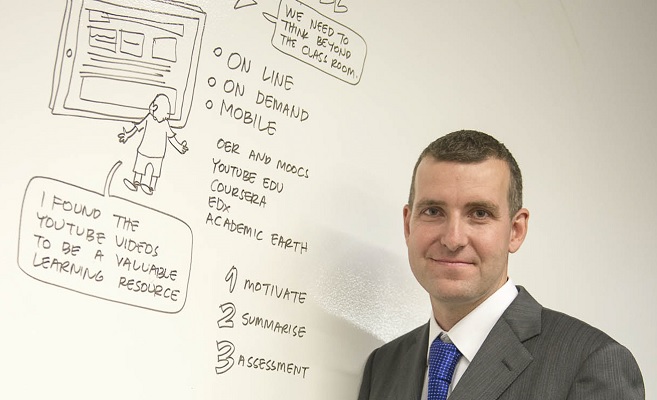How to choose a career path in five easy steps

Remember when you were still bright-eyed and bushy-tailed, and the question of what you wanted to be when you grew up inspired a no-nonsense response? ‘Doctor!’ ‘Explorer!’ ‘Astronaut!’. Fast-forward a couple of decades, and the question of what career path to pursue isn’t quite so straightforward.
For many young adults, choosing which direction to take after high school can feel daunting, if not impossible. Should I pursue further study? Which education provider do I choose? Which course is right for me? Should I take some time out?
The path to your dream career may be fraught with challenges and setbacks, but there are several things you can do to keep on track. Use these tips to help get your career compass pointing in the right direction.
1. Know thyself
When it comes to choosing your career, the old maxim ‘know thyself’ rings truer than ever. Taking the time to carefully assess your interests, aptitudes and personality type goes a long way towards identifying your potential.
Conducting some kind of self-assessment is a vital first step. This could take the form of a questionnaire, career personality test, or psychometric indicator like the Myers-Briggs test.
Or, perhaps it’s as simple as asking yourself which subjects you enjoy, and which you excel in. Do you pursue any extracurricular activities? What are your values and your worldview? Think of it as writing an autobiographical pros and cons list. ‘I’m good at X, but not so strong when it comes to Y.’
Pinpointing your personality type and nutting out your strengths and weaknesses will go a long way towards ensuring you set off in the right direction.
2. Don’t be afraid to ask for help
Conceding defeat can be tricky, not to mention demoralising, but now isn’t the time for pride. Your future is at stake!
Sourcing some first-hand industry knowledge will help you decide how realistic your job prospects are, expose the hidden perks (and the pitfalls!), and open your eyes to new possibilities.
Most high schools and colleges offer a career guidance service, so this should be your first stop. If possible, make a booking to see an advisor one-on-one. After assessing your general aptitudes and ambitions, you’ll be given more tailored advice on your shortlisted options: what the job market is like, salary, potential for growth, stability, hours, work–life balance and qualification requirements.
Attend tertiary education expos and information evenings, subscribe to career advice blogs and RSS feeds, chat with family and friends – get your hands on advice, tips and industry insight in any way you can!
3. Study, study, study!
You’ve just spent the last 12 or 13 years of your life in school – nobody could blame you for declaring an all-out ban on academia. In some cases, however, the only way to find out whether you’re cut out for a particular career is by dipping your toes in the water. Whether this means doing some extreme Googling, enrolling in a MOOCs course or taking the plunge and heading straight to university is up to you.
Resist the tendency to feel pigeonholed by your decisions. If it happens that you arrive part-way through your course and realise it’s just not for you, there are several options for transferring or deferring your studies, and many unis offer recognition of prior learning as credit towards future learning. Think of further study as broadening your horizons, not as boxing you in!
4. Prepare a professional resume
Ensuring that your credentials are up-to-date could mean the difference between securing a last-minute internship or landing a holiday bar job in Brazil – you never know when they’ll come in handy!
If this is the first time you’ve prepared a resume, don’t fret. There are plenty of online resources out there that can help you navigate the basics of resume and cover letter preparation, including endless samples and templates.
5. Follow your heart… or don’t
It’s that age-old dilemma in love and life – to follow your heart, or to use your head. Do you pursue a path based on your passions and interests, or do you choose a ‘practical’ job path that offers reliable career and salary prospects?
If MailChimp founder and email marketing heartthrob, Ben Chestnut, is to be believed, we should abandon our obsession with finding something we love doing, in favour of his more pragmatic mantra: love what you do.
There’s no easy solution to this common conundrum. But, let’s face it – if you do decide to pursue a career you don’t enjoy simply because of ‘practical’ considerations or parental expectations, you’re setting yourself up for unhappiness, or even a mid-career meltdown.
Always keep your options open; life after school doesn’t have to mean stepping out of the classroom and into the lecture theatre. If your heart just isn’t drawn to the idea of further study, then consider alternatives like apprenticeships, vocational education or even a gap year.
Whatever your decision, bear in mind that most people change career paths up to five times during their lifetime, so recalibrating your professional direction is not unusual and can make for an even more interesting journey!
Bio: Molly is a content marketer for online courses and career resources hub Career FAQs. She completed a communications degree in 2009, but has plans to pursue additional study… if she can find the time!




